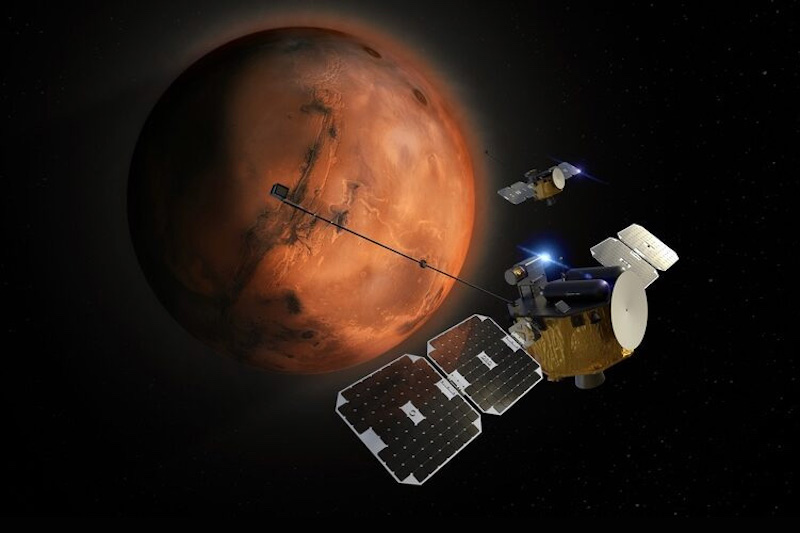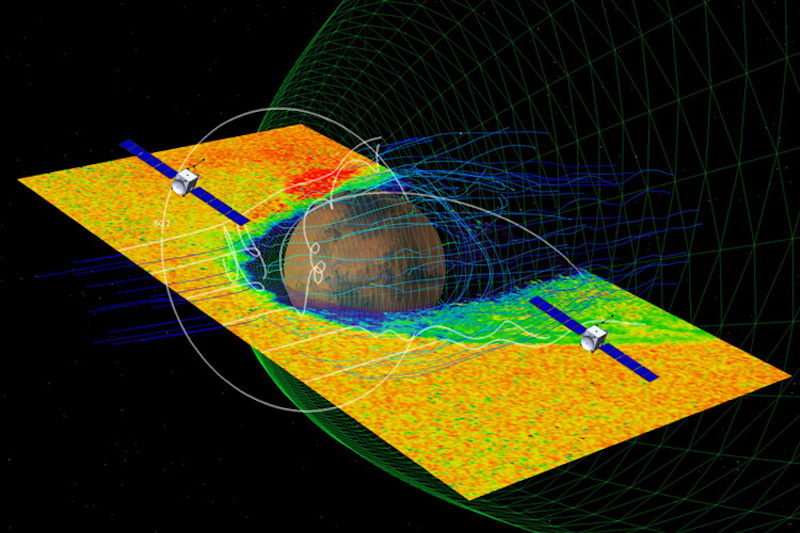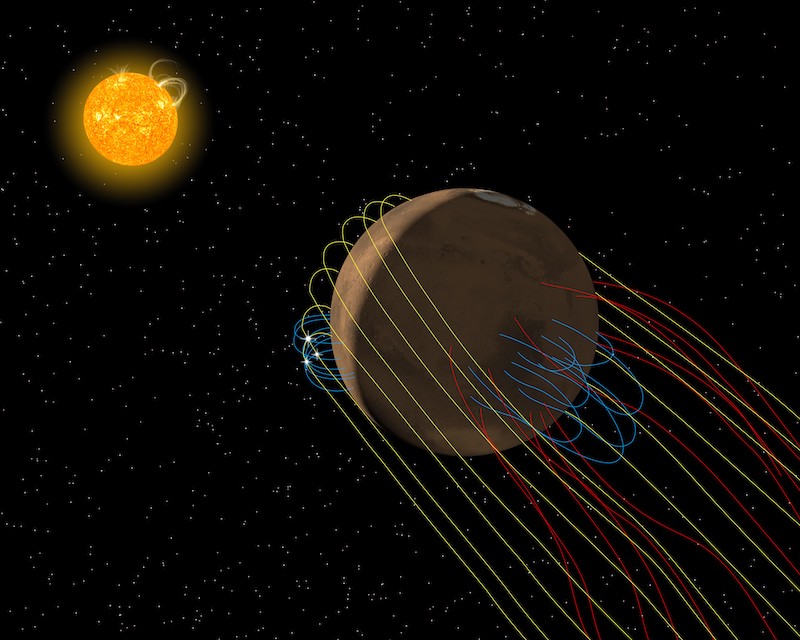
Mars mission to study magnetosphere on the cheap
NASA and its partners want to find out if they can study the solar system without breaking the bank. To this end, they’ll soon send a new, cost-effective Mars mission to the red planet. A pair of small satellites – called Blue and Gold – will fly into Earth-orbit no earlier than spring 2025. They’ll ultimately go on an 11-month journey to Mars.
This 5-month mission at the red planet is officially called the Escape and Plasma Acceleration and Dynamics Explorers, or ESCAPADE. It represents a proof-of-concept, relying on new spaceflight technology to keep costs down. Mission leader Robert Lillis previously said in a talk with UC Berkeley News:
ESCAPADE and two other NASA missions recently approved are experiments to see whether advances in the space industry over the last five to 10 years can translate to a much better bang for the buck in terms of science per dollar. Sending two spacecraft to Mars for the total cost of under $80 million is just unheard of. But current NASA leadership is taking the risk.
The risk is a mission failure. But at 10% the normal cost for sending a spacecraft to Mars, NASA figures it can afford to roll the dice. Lillis put it this way:
Instead of spending $800 million for a 95% chance of success, can we spend $80 million for an 80% chance? This is what NASA is trying to find out with these missions, and we are lucky to be one of the guinea pigs.

Going for the Gold and Blue on Mars
Lillis is also the University of California, Berkeley Space Sciences Laboratory (SSL) associate director for planetary science and astrobiology. The SSL – working in conjunction with the NASA’s Goddard Space Flight Center – engineered the twin probes. In managing the mission, the SSL will run the onboard instruments and process the data. It’s also flying the craft.
And so that’s why the satellites are named Gold and Blue. They’re the official Berkeley colors. Sending two satellites to scan the same terrain will give ESCAPADE’s data an added dimension, Lillis said:
With simultaneous two-point observations of the solar wind and Mars’ ionosphere and magnetosphere, ESCAPADE will bring us the first stereo picture of this highly dynamic plasma environment.

Figuring out how Mars gets electrically charged
The Mars mission aims to track the internal workings of the planet’s magnetic environment, aka its magnetosphere. The mission scientists want to know how energy and matter from the solar wind makes its way in and out of Mars’ planetwide magnetic field.
Mars’ magnetic field is unlike those on other planets. It’s often called a hybrid. On the one hand, it’s a solar-induced magnetosphere, like that on Venus, created in part by the interaction of the solar wind with the Martian atmosphere. On the other hand, it also has localized areas of intrinsic magnetic fields from the planet’s crust. Plus there are larger-scale global influences.
NASA described the mission goals for probes:
ESCAPADE will analyze how Mars’ magnetic field guides particle flows around the planet, how energy and momentum are transported from the solar wind through the magnetosphere and what processes control the flow of energy and matter into and out of the Martian atmosphere.
ESCAPADE is part of the NASA Small Innovative Missions for Planetary Exploration (SIMPLEx) program. The spacecraft is relatively small, with a mass under 200 pounds (90 kg). Onboard are a magnetometer, an electrostatic analyzer to measure superthermal ions and electrons and a plasma density probe.
The end of the mission is planned for March 2027.

Bottom line: The Mars mission ESCAPADE will study the red planet’s magnetosphere using a pair of small satellites. ESCAPADE will launch no earlier than spring 2025.











